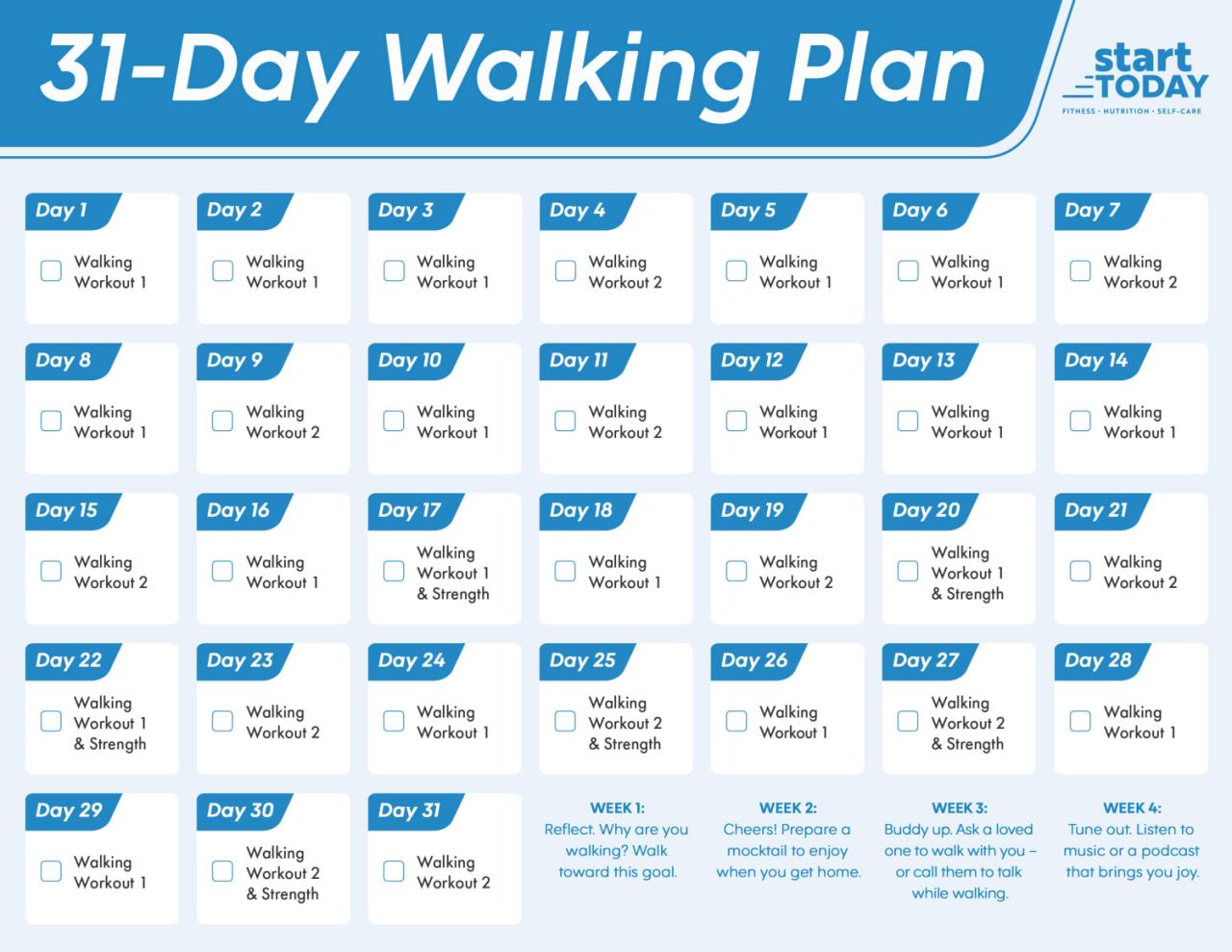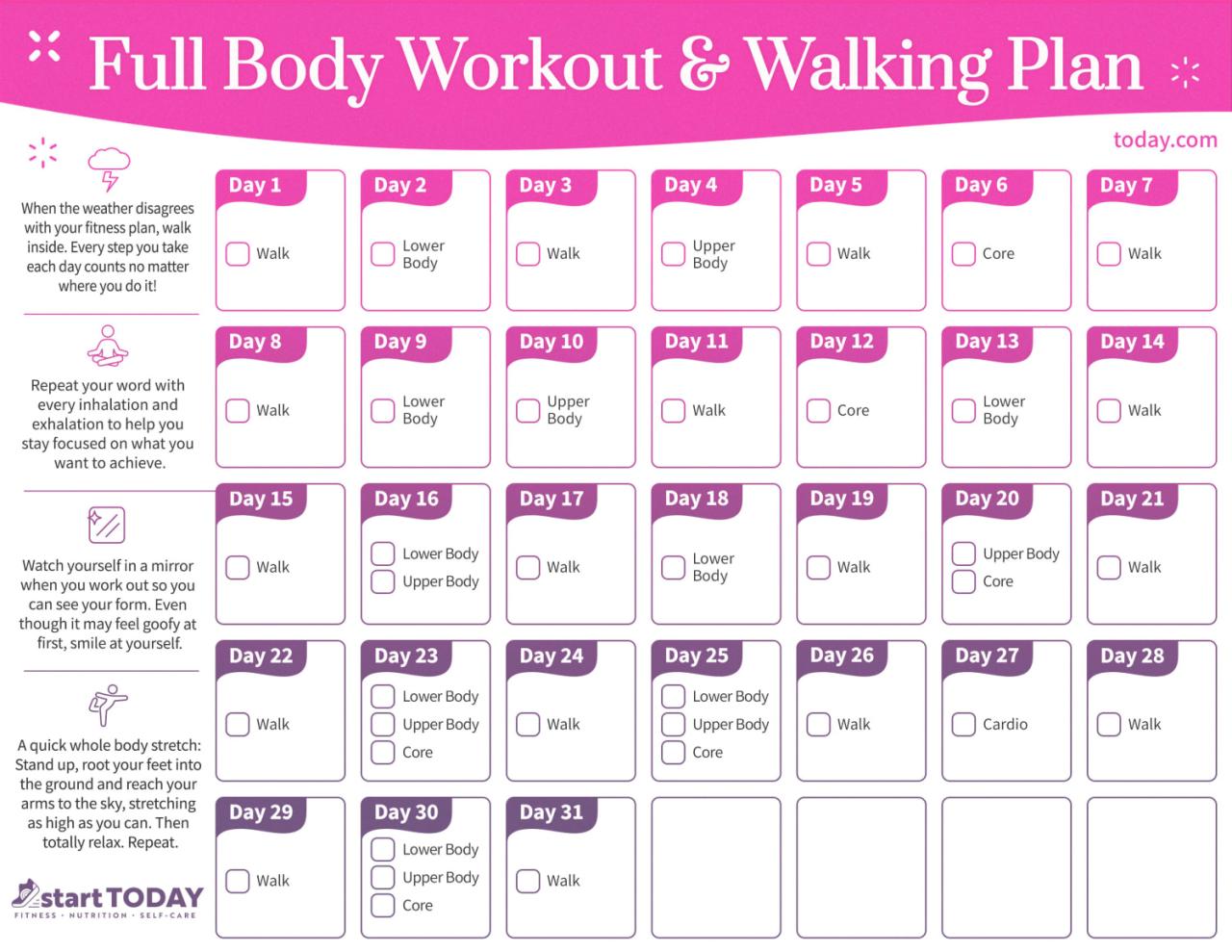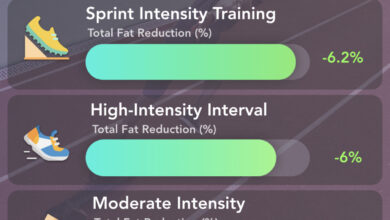
4 Week Power Walking Plan for Weight Loss
4 week power walking plan weight loss – Ready to ditch the gym and embrace the great outdoors? A 4-week power walking plan for weight loss can be your ticket to a healthier, fitter you. It’s a simple, yet effective way to burn calories, boost your metabolism, and enjoy the fresh air.
This plan is designed for beginners, but can be adapted to fit your current fitness level.
Power walking isn’t just about strolling leisurely through the park. It’s about engaging your whole body, increasing your heart rate, and maximizing your calorie burn. With a structured plan, you’ll progressively increase your distance and intensity, building strength and endurance along the way.
We’ll delve into the science behind power walking, explore proper technique, and equip you with everything you need to stay motivated and achieve your weight loss goals.
Power Walking Techniques and Form

Power walking is a fantastic cardiovascular exercise that can help you achieve your weight loss goals and improve your overall health. To maximize the benefits and avoid injuries, mastering the correct power walking technique is crucial. This involves paying attention to your posture, arm swing, and foot strike.
A 4-week power walking plan can be a great way to shed those extra pounds and boost your overall health. Before you hit the pavement, it’s important to invest in the right footwear. Choosing between walking and running shoes can be tricky, so I highly recommend checking out this article on walking versus running shoes whats the difference.
Once you’ve got the perfect pair, you’ll be ready to start your power walking journey and see those results!
Posture
Maintaining proper posture while power walking is essential for maximizing efficiency and minimizing the risk of injury. Here’s how to achieve optimal posture:
- Stand tall:Imagine a string pulling you up from the top of your head, elongating your spine.
- Engage your core:Tighten your abdominal muscles to support your back and prevent slouching.
- Keep your shoulders relaxed:Avoid hunching or raising your shoulders.
- Look straight ahead:Focus on a point about 10-20 feet in front of you, maintaining a neutral head position.
Arm Swing
The arm swing plays a crucial role in generating momentum and improving your power walking pace. Here’s how to effectively swing your arms:
- Keep your elbows bent:Aim for a 90-degree angle at the elbow.
- Swing your arms forward and backward:Move your arms in a natural, rhythmic motion, allowing them to swing freely from your shoulders.
- Avoid crossing your arms:Keep your arms moving in a forward-backward plane, without crossing your body.
- Engage your hands:Keep your hands relaxed but not limp. Imagine you’re holding a small ball in each hand.
Foot Strike, 4 week power walking plan weight loss
The way your foot strikes the ground significantly impacts your power walking efficiency and injury risk. Aim for a midfoot strike:
- Avoid heel striking:This can put unnecessary stress on your ankles and knees.
- Avoid toe striking:This can lead to foot and ankle pain.
- Focus on a midfoot strike:Land on the middle of your foot, rolling smoothly through to your toes as you push off.
Maintaining Pace and Rhythm
Consistency in your pace and rhythm is crucial for effective power walking.
A 4-week power walking plan can be a great way to kickstart your weight loss journey. But, like any exercise program, you might hit a plateau where progress slows down. To avoid this, remember that consistency is key, and it’s crucial to challenge your body.
Check out these 6 ways to avoid workout plateaus and consistently progress to keep your power walking plan effective and see continued results. By incorporating these strategies, you’ll be well on your way to reaching your weight loss goals!
- Find your comfortable pace:Start with a brisk walk that allows you to comfortably hold a conversation.
- Focus on a steady rhythm:Maintain a consistent cadence, counting your steps per minute.
- Use a metronome or music:These can help you maintain a consistent pace and rhythm.
Avoiding Power Walking Injuries
Power walking can be a safe and effective exercise, but it’s essential to take precautions to avoid common injuries.
A 4-week power walking plan for weight loss is a great way to get moving and shed some pounds. While it’s not as intense as running, power walking still requires a decent amount of energy, and that’s where carb loading comes in.
If you’re looking for more information on how to fuel your workouts, check out this article on how endurance athletes should carb up during workouts. The principles can be applied to power walking too, ensuring you have enough energy to keep going and reach your weight loss goals.
- Start slowly and gradually increase intensity:Don’t overdo it at the beginning. Gradually increase your distance and pace over time.
- Wear supportive shoes:Invest in good quality walking shoes that provide adequate support and cushioning.
- Listen to your body:Pay attention to any pain or discomfort and rest if necessary.
- Warm up and cool down:Always warm up before power walking and cool down afterward to prevent muscle soreness and injury.
- Stay hydrated:Drink plenty of water before, during, and after your walks.
Nutrition and Hydration for Weight Loss

Power walking is an excellent exercise for weight loss, but it’s crucial to remember that nutrition and hydration play a vital role in achieving your goals. By fueling your body correctly and staying hydrated, you can optimize your workouts, enhance your energy levels, and support your overall weight loss journey.
Importance of Proper Nutrition
Eating a balanced and nutritious diet is essential for weight loss. A calorie deficit is key, meaning you consume fewer calories than you burn. However, it’s important to focus on consuming nutrient-rich foods that provide sustained energy and support your body’s needs.
Sample Meal Plan
Here’s a sample meal plan that emphasizes calorie control and nutrient-rich foods, ensuring you have enough energy for your power walking sessions:
Breakfast (300-400 calories)
- 1 cup oatmeal with 1/4 cup berries and a sprinkle of nuts
- 2 eggs with a slice of whole-wheat toast and avocado
- Greek yogurt with fruit and granola
Lunch (400-500 calories)
- Large salad with grilled chicken or fish, mixed greens, vegetables, and a light vinaigrette dressing
- Whole-wheat wrap with lean protein, vegetables, and hummus
- Lentil soup with a side salad
Dinner (500-600 calories)
- Baked salmon with roasted vegetables and brown rice
- Chicken stir-fry with brown rice and vegetables
- Lentil stew with whole-wheat bread
Snacks (100-200 calories)
- Fruit with a handful of nuts
- Greek yogurt with berries
- Vegetable sticks with hummus
Staying Hydrated
Water is essential for various bodily functions, including regulating body temperature, transporting nutrients, and aiding in weight loss. Staying hydrated is particularly important during power walking sessions.
Tips for Staying Hydrated
- Drink water before, during, and after your walks.
- Carry a water bottle with you and refill it regularly.
- Drink water throughout the day, even when you’re not thirsty.
- Consider adding electrolyte-rich drinks, such as sports drinks, to replenish lost electrolytes during longer walks.
Remember, everyone’s nutritional needs are different. Consult a registered dietitian or a healthcare professional for personalized advice.
Final Wrap-Up: 4 Week Power Walking Plan Weight Loss

So lace up your shoes, grab your water bottle, and get ready to embark on this transformative journey. A 4-week power walking plan is more than just exercise; it’s a commitment to your health and well-being. Embrace the power of walking, and watch as you shed pounds, boost your energy, and discover the joy of moving your body.
Remember, consistency is key, so stay focused, listen to your body, and enjoy the process. You’ve got this!






